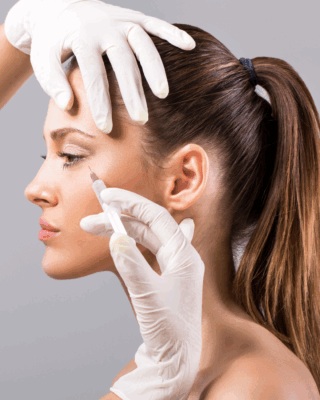When it comes to beauty treatments, most of us start with curiosity. We scroll, we ask around, we picture what a small change could do. But just as quickly, one image or anecdote can make us hesitate. All it takes is a single headline or an overdone result to throw us off course. Suddenly, what once felt exciting starts to feel risky. Pillow face has become one of those buzzwords—something people whisper about in the comments section or use to describe what they don’t want. It’s the modern aesthetic boogeyman. Even if you don’t know exactly what pillow face means, you know you’ve seen it. That overly full, tight look that makes you wonder where things went too far. It’s easy to assume that one wrong move will leave you stuck with a face that doesn’t feel like your own.
But the truth is, these outcomes are not inevitable. The difference often comes down to the environment you choose. It matters to have a place that listens, educates, and helps you understand what feels right for you. When you’re met with care, clarity, and honest conversation, the process shifts. It becomes less about chasing trends and more about making informed, thoughtful decisions. That is what makes all the difference.
What Is Pillow Face?
In the beauty world, the term “pillow face” has emerged as a cautionary phrase. It describes a face that appears unnaturally puffy, swollen, or overly full after cosmetic treatments. This happens when dermal fillers, which are meant to restore lost volume and soften wrinkles, are overused or improperly placed. Instead of enhancing natural beauty, excessive filler can blur facial definition, round out the cheeks unnaturally, and even make the skin look stretched or shiny. Some people also notice that their facial expressions seem less animated, creating a look that feels less like themselves.
Several factors can contribute to the overfilled, puffy appearance known as “pillow face.” The most common causes include:
- Overfilling: Using excessive filler, especially in areas such as the cheeks, under the eyes, or nasolabial folds, can create a cushion-like or inflated appearance.
- Incorrect placement: Injecting filler too close to the skin’s surface or into the wrong tissue plane can leave the face looking uneven and unnaturally puffy.
- Filler migration: Over time, filler can shift from its original placement, adding to the swollen, distorted effect.
- Type of filler used: Different fillers behave in different ways. Products that attract and retain too much water, particularly if not matched to your skin type, can make puffiness more noticeable.
Avoiding pillow face requires more than just caution with the amount of filler. It demands a provider who understands where, how, and why to place filler in a way that maintains natural balance and harmony.
Why Skill and Balance Matter
One of the biggest contributors to pillow face is inexperience. Skilled injectors understand facial anatomy and take a conservative approach, working with your natural structure rather than against it. Unfortunately, untrained or overly aggressive practitioners may use more product than needed or apply it in ways that disrupt the face’s natural balance.
The phenomenon has gained more attention in recent years, particularly with the rise of social media and the constant public scrutiny of celebrity faces. As more people seek cosmetic enhancements, conversations about maintaining a natural, healthy appearance have become more important than ever.
If you’re considering dermal fillers, the most important decision you can make is choosing a provider with the right skill and expertise. At the Aesthetic Associates Centre, our team combines advanced training with a deep understanding of facial anatomy to deliver natural, balanced results. Board-certified plastic surgeon Dr. Samuel Shatkin Jr. and our licensed aestheticians carefully evaluate your features. We determine exactly how much filler you need and where it should be placed to maintain your natural contours. With the right approach, it’s possible to enhance your appearance without ever looking overdone.
Is Pillow Face Permanent?
Pillow face is not permanent. While it can be discouraging to see your face look unnaturally full after filler, the effects almost always fade as your body gradually metabolizes the product.
Most dermal fillers are made of hyaluronic acid, a substance your body naturally produces. Over time, the filler breaks down and is absorbed, allowing your natural contours to return. This process typically takes six to twelve months, depending on the type and amount of filler used. Thicker or longer-lasting formulations may take more time to dissolve completely, but even these are temporary.
Pillow face does not usually cause permanent changes to facial tissue. Once the filler is gone, your features return to their natural balance. With the right care and expertise, it’s entirely possible to correct overfilled areas and achieve a more refined, natural look.
Schedule a Consultation With Experts You Can Trust
The difference between a result that feels off and one that feels like you comes down to who you choose to guide your care. At the Aesthetic Associates Centre, every consultation is focused on you. We take the time to listen, answer your questions, and design a plan that enhances your natural features with precision and expertise. Call today to schedule your consultation and move forward with confidence.
Learn more about our approach to natural, beautiful results. Follow us on Facebook and Instagram today!



BLOG CATEGORIES
Botox Fillers Chemical Peels Morpheus8 Microneedling Laser Treatment Facials MedSpa Tattoo Removal Weight Loss Plastic Surgery